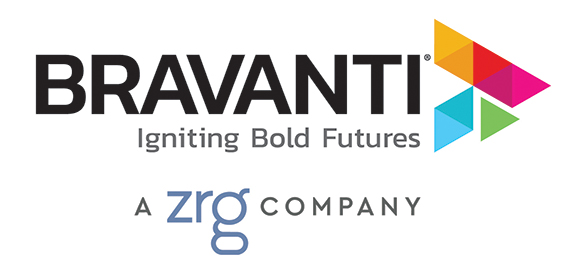By Bravanti
It’s no secret that American workers are experiencing burnout at alarming rates. In fact, 52% of employees have experienced symptoms of burnout since the start of the pandemic. Yet the working world continues to place value on the things that cause it, such as a 24/7, “always on” culture; consistently prioritizing work over home life; lack of boundaries; and always saying yes.
As the pandemic continues to wear into its second year, the Great Resignation – or The Great Reawakening – has seen millions of workers reevaluate their priorities and leave the workforce in droves, often due to burnout.
As a result, employers are left struggling with retention and searching for answers. Many are saying it’s time to recognize burnout not as a badge of honor, but rather as a warning sign that someone’s life is precariously out of balance.
One of the most challenging things about burnout in the workplace is what’s often left unsaid. Burnout sufferers might say to themselves:
“Everyone else seems to be managing; what’s wrong with me?”
“I thought I was more capable than this.”
“How do I tell people what’s going on with me in a way that won’t sound like I just can’t hack it?”
“What if I tell someone, and that’s the end of my career?”
This thinking illustrates the complexities of burnout in the workplace. When we leave things unsaid or deny reality, we introduce shame into what would otherwise be normal feelings. And if these things are left unsaid, there is little an organization can do to address them.
What Causes Burnout?
Too often we erroneously ascribe the causes of burnout to the individual when research shows that burnout has more to do with the system or organization. Essentially, the system – through its culture, operations, and values – creates the conditions for burnout to occur.
The causes of burnout are clear:
- Unrealistic workload
- A perceived lack of employee control
- Lack of reward or recognition for effort and time expended
- Poor team dynamics
- A feeling of being treated unfairly
- Individual and organizational values are at odds
- Excessive collaboration or overly complex decision making
- 24/7 digital culture that can cause overwork and overwhelm
This last one is important to spend a moment on. In the drive to increase productivity and efficiency, organizations invest a lot of time, money, and effort in new tools and technologies. But the dark side of these investments is that they often lead to an increase in multitasking. And the research is clear: multitasking is not possible with complex work; it’s exhausting; it lowers performance considerably; and even lowers in-the-moment IQ by double digits. So, technology before people is not the answer.
Signs of Burnout
Here are some simple ways to identify burnout in yourself or your colleagues:
- Exhaustion. Are you always tired and/or articulate the feeling of being tired all the time?
- Attitude toward work. Have you seen or felt a sudden change in your or your colleague’s attitude toward work?
- Self-doubt. Is a very capable colleague suddenly expressing a lack of self-confidence and doubt in their decision making?
- An increase in any of the following: lack of focus; depressed mood; hostility and/or expressions of hopelessness
How to Fix Burnout:
Several strategies can help to address burnout and reverse its effects:
- Recognize and acknowledge that it exists in your organization
- Create a culture that promotes discussion and empathy about this and other mental health challenges
- It may seem as if others who are not suffering from burnout are more capable than you, but they likely have developed coping mechanisms over time that keep them from experiencing burnout
- Help people prioritize and set criteria for when it’s okay to say no
- Practice self-care, limit workloads, insist on renewal, and boost employee control (clarify expectations, be flexible where possible, advocate for resources, create uninterrupted time for people to get work done)
- Make recognition meaningful by acknowledging big and small successes and people who help each other, and note the positive impact of work outcomes
- Focus on learning and helping people grow
- Create an inclusive workplace culture that welcomes multiple points of view
- Help employees build developmental networks, deliberately adding people to it who will help them grow
- Create a team charter
- Focus on purpose and values
The Upside of Fixing Burnout
The solutions to curb burnout are all within reach because they are grounded in human relationships and we can find ways to make them more effective. What’s good for the individual is also good for organization because it leads to:
- Increased engagement
- Greater productivity
- Prioritizing the right work
- Better decision making
- Increased savings on healthcare costs
- Increased retention of your most engaged employees
Addressing the issues of burnout is not easy, but it’s necessary – and achievable – in order to create truly resilient organizations.

